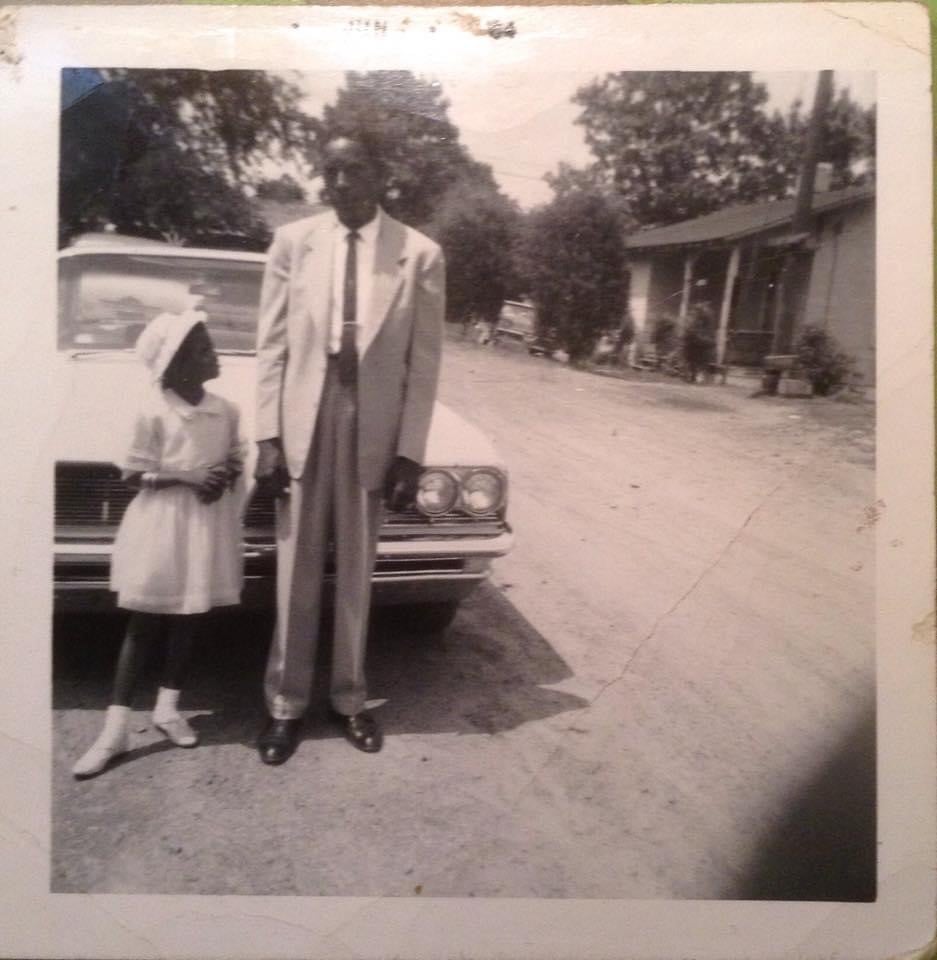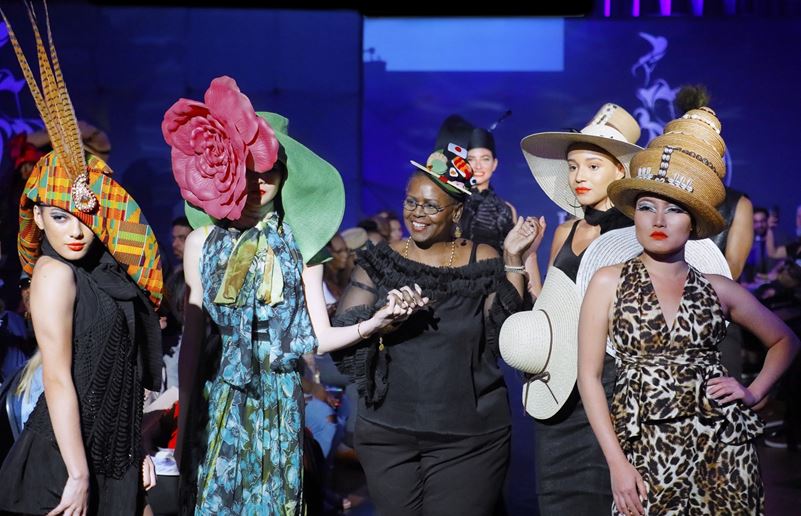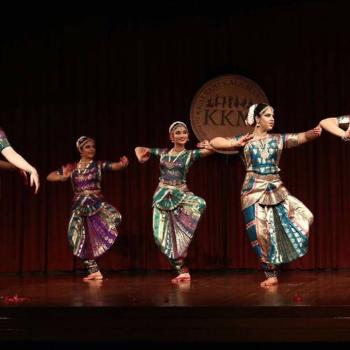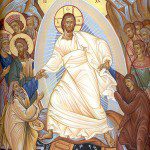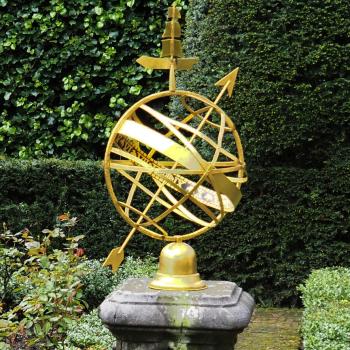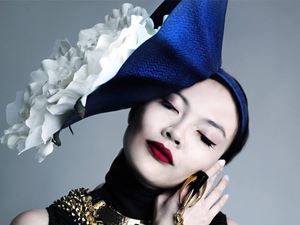
Religion Behind the Scenes spotlights the crucial but less visible tasks that keep religious communities running, and the people who make it all happen.
For many Christian congregations, dressing up on Easter Sunday often includes a new, beautiful hat.
Evetta Petty is one of the world’s most coveted milliners, or hat designers. Her creations are regularly featured in Vogue and in fashion magazines around the world, and have been displayed at The Metropolitan Museum of Art as wearable art. For over three decades, she has dressed the world’s top supermodels and outfitted numerous television and network shows. Her shop, Harlem’s Heaven, is not only one of the go-to destinations for dramatic hats, but the premier shop for Easter hats.
In this ‘Behind the Scenes,’ Evetta Petty tells us everything you need to know about buying a hat for Easter Sunday.
Did you grow up with the tradition of wearing Easter hats?
Definitely. I grew up in the Baptist Church, in the south, in Alabama and Florida. And, of course, on Easter Sunday there was always a new hat. In fact, my favorite photograph is of my grandfather and myself going to church. He’s dressed in this fabulous suit, with a lovely new fedora, and I’m about six years old, and I have on a hat, gloves, the whole works.
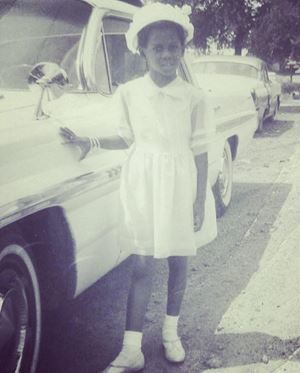
How did you end up in Harlem?
I always knew that I was going to be in the fashion industry, because I started sewing and making jewelry and all sorts of things at a very young age. When I was eight or nine years old, I was already on the sewing machine. It was one of those old ones where you had a pedal, and my feet could barely touch the pedal. I came to New York for FIT (Fashion Institute of Technology) and graduated with my degree in fashion marketing and textiles. I was not a millinery student. I really never intended to be in the hat business. But hats were my hobby. I wore these hats that I made everywhere. And my hats always got so much attention, especially at church.
So, eventually I had to make a couple for a few friends. Then my aunt said to me, “These hats get so much attention. Let's make up a few and see what happens.” We started doing little pop-up shops and markets. We would go to Soho, or we would do a church event, and my hats always just sold out… immediately! They just sold. After that happened a few times, my aunt and I were thinking: “Why not try a little store?” Back then it was easy to find a little selling space and rent was not super high. I found a little space down in SoHo. I ended up quitting my corporate fashion job and becoming a full-time milliner, a full-time hat maker. That was more than 30 years ago.
Then—and this was in the late 80s—my aunt told me she had found an empty store uptown in Harlem. We were both thinking, just “Wow!” There are churches everywhere up there, and all these uptown churches absolutely love going out to buy new hats for church. This is the place to be. We ended up in Harlem because there is such a rich church community in Harlem. My original customers were church goers. The elders and a lot of the missionaries and the deaconesses, who wear the same colors on Sunday—and the ministers’ wives, who dress fabulously from head to toe. So, that was the place to go and that's how I ended up with the store uptown in Harlem.
Why do you think hats hold such a special place in worship life for so many Christian women?
For a lot of women in the church, the practice is biblical to begin with. You are supposed to cover your head during worship. I believe it's in the Bible, in Paul's letter to the Corinthians, that says basically a woman who does not cover her head dishonors her head. In the Black Church community, there is a feeling that, if I'm going to cover my head, I'm being obedient to God. And if I’m being obedient to God, I'm going to cover it with something so beautiful and fabulous!
What is the process of buying a new Easter hat? Do customers know what they want, or do you have to help guide them?
Most of the customers come to me for guidance. They really want me to tell them what works and what doesn't work. I feel like I'm an educator when it comes to hats. I mean, I might pair a hat with a dress that someone brought in, and they wouldn't ever think to pair that pattern with the dress or that color with that dress, but when I have them try it on they say: “Oh my God, you were right! This looks amazing!”
Though, by now, a lot of my customers are repeat customers. I have had a couple of people come in and say, “You know, my grandmother used to shop here.”
A lot of it is education. I'm not trying to sell you a hat just to sell you a hat. I really want you to look great. We're working toward the same goal. I don't have to push a hat on you that does not look good on you, because there are so many hats in the shop. We will find one that looks good on you. And if we don't find it, I'll make it for you.
Occasionally, If I were to do something custom for a customer, they might bring me fabric and say I really need a hat made out of this fabric, because I want a matching hat with my suit of the same fabric. So, we do that.
If it was a non-covid period, there would be people coming in trying on hats, people coming in with their dresses and their shoes to match a hat. I also keep a very healthy inventory of men’s hats. Right now, things are extremely slow because of the pandemic. The hat business is very seasonal. Its Easter, Mother's Day, the Kentucky Derby, and all the other horse races thereafter. So, this would be the beginning of a super busy season under normal circumstances.
When you get an idea for a design, what happens next? How do you actually make a hat?
There are several ways to make hats. There are cut and sew hats, which is just fabric that you lay out on a pattern and sew together on a sewing machine the same way that you would sew a dress. That’s one way to make a hat. Another way to make a hat that is made out of wool, felt, or straw, is to block it. The term blocking is really just stretching the fabric over a mold, which itself is called a “block.” They are usually made out of wood. For just about every shaped hat you see—whether it’s a fedora or a pillbox—there is a block in that exact same shape, and the fabric was molded over that block. For example, if it's a piece of wool, then, when it's wet, you stretch it over that shape and you tie it or nail it to the mold—and it dries overnight. Then you pull it off the mold and start finishing it. That's the basic way that a blocked hat is made.
The fascinators and little head pieces, I make by hand from start to finish. Sometimes I take a bouquet of flowers or a bunch of feathers and I just start hand sewing. I might take a headband and cover it in a beautiful fabric and then attach the feathers to the band, but that’s a free form way of making a head piece.
So, there are many different steps to get to a finished hat, depending on what kind of hat it is.
How have Easter hat trends changed during your time as a designer?
Things are way more dramatic, more high fashion, in church hats now. I love the Roaring Twenties look. I have a particular aesthetic, and that's my favorite. The most significant shift was after the royal weddings. For a long time, younger women did not want to cover up their hair. The royal weddings changed everything. All of a sudden, I had the young women from church coming to see me. They used to say things like “I don't think I'm old enough to start wearing hats. This would be for Sister so-and-so.” All of a sudden, they want hats too. I was getting all these requests from people who were having hat-themed lunches. So that's a big change that I've seen so far.
The hats have become very powerful in the church. When you look out over all the congregation you see all these big hats, and it’s a statement. That one is even bigger than the next. That one is full of feathers. It's a bold statement.
What are misconceptions people have about this work?
I think a lot of people think it's easy. I had a couple of customers—who’ve been good customers—and all of a sudden they decide they want to become a hat maker. They go buy some material, or they look at one of my hats and they go buy all the parts and, I guess, in their mind they think, “This doesn't look so hard. I can make this, and I won’t have to buy hats anymore, because I'll make my own.” And then they show up at my store with the hat that they've made and, when you look at it, it’s a disaster. And they say, “Can you help me straighten this out?”
I think a lot of them learn that lesson. Some of them also gain a better appreciation of what I do. Some people might think my hats are kind of expensive or whatever, but they’ve never actually gone and tried and bought all of the supplies that were needed. One woman told me, “Oh my God, I had no idea how much crystal cost!”
For some, it gave them a great appreciation of what I do and an understanding of pricing.
What motivates you in this work, and what inspires you in your designs?
I get inspiration from all over. First of all, it is just a wonderful thing to help women look their best. My mom used to always say, when I was young, “I used to go to the clubs and dress up, and now I go to church and I dress up for Jesus.” It's really an honor to dress women like this. I just feel lucky that I do something that I absolutely love, and I use my talent and my creativity in this way.
I am inspired by everything. I travel all over the world. I like to buy fabric and textiles in unusual places—everywhere from India to Hong Kong to Saudi Arabia. I want my hats to be a bit different. I want them to have global appeal. I do a lot of hats for magazine editorials and high fashion shoots. There are many different outlets for what I do, but I can never forget the foundation of the church and the people who have supported me over the years.
I use a lot of non-traditional materials. I see a hat in everything. It could be a rug, something that was supposed to be a wall hanging, a shower curtain, an old pillow. I can upcycle old coats.
I guess the good thing is, I never run out of ideas. I have more ideas than I have the time to create. I'll just be walking around the houseware department, looking at cake pans, and I’ll think, “Can I take a wool fabric and stretch it over that Bundt cake pan? Can I capture that shape for a hat?”
Interview conducted, edited, and condensed by Shira Telushkin
Shira Telushkin is the managing editor of special projects at Patheos, where she combines her love of stories with her love of all things religion. A graduate of the Harvard Divinity School, she writes, edits, and produces media projects related to faith and beauty in all their forms.
11/1/2024 8:04:37 PM
